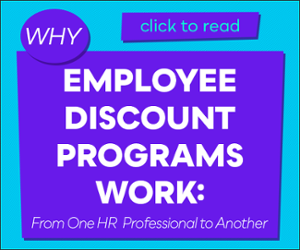At the most basic level, employee engagement is a measure of the relationship between an employee and their employer.
Within employee engagement are three distinct levels: engaged, disengaged, and actively disengaged.
An engaged employee takes a personal interest in the success of their employer and their colleagues. They’re enthusiastic about the company’s goals and put in their best efforts without constant prodding.
A disengaged employee simply goes through the motions. They do what’s required of them most of the time, but feel no personal stake in the company’s goals or success.
An actively disengaged employee sabotages the company’s efforts to succeed. For whatever reason (resentment, disgust, boredom, etc.), these folks are unhappy at work yet won’t resign or take a job elsewhere.
Why Employee Engagement Matters
Employee engagement matters because brains matter.
The era of manufacturing is over. The American worker no longer stands at an assembly line repeating mindless tasks and being judged on how many widgets they can churn out.
The modern workplace requires personal knowledge, relationships, and an ability to navigate technology. And people need to feel good.
Back in the day it didn’t matter how an employee felt. Just get ‘em on the line creating widgets.
It’s much harder today. Getting the best work out of an employee on a consistent basis means navigating a plethora of factors.
The modern workplace must appeal to brains, hearts, lifestyles, families, and more.
This is the era of employee engagement. Happy, dedicated employees are a necessity.
Their best work is dependent upon it.
The company’s success depends on it.
Whether they’re coding at a computer, selling clothes in the store, dialing for dollars in a call center, or sitting in a boardroom making high-level decisions, employees perform better when they feel a personal enthusiasm for the results.
Some organizations are better than others at positioning employees for success. Earning consistent engagement requires a few critical factors:
-
Heavy emphasis on hiring people who fit the culture
-
Fair compensation and employee benefits
-
Opportunities for training and advancement
-
Recognition and rewards (or even simple acknowledgement) for excellent performance
The Benefits of Engaged Employees
As expected, engaged employees are like Super Employees. They’re more profitable, enthusiastic, and even call in sick less.
Check out just a couple of the stats from our ultimate collection of employee engagement statistics:
-
Organizations that have over 50% employee engagement retain over 80% of their customers (Demand Metric)
-
Customer retention rates are 18% higher on average when employees are highly engaged (Cvent)
-
Just 37% of engaged employees would consider leaving for a 20% raise or less, compared to 54% of actively disengaged employees (Gallup)
-
Highly engaged employees are:
-
2.5 times more likely to stay at work late if something needs to be done after the normal workday ends
-
more than twice as likely to help someone at work even if they don’t ask for help
-
more than three times as likely to do something good for the company that is not expected of them
-
more than five times as likely to recommend that a friend or relative apply for a job at their company (Temkin Group)
-
Building an organization around employee engagement could become a major competitive advantage. Just 55% of organizations have an employee engagement strategy (according to Edelman), and less than 35% of the workforce is engaged.
Obviously, you want as many engaged employees as possible.
Disengaged employees aren’t ideal, but they can do well in certain monotonous roles.
The actively disengaged employees are dangerous, and can drag others down with them. Bad attitudes spread like wildfire.
Employee Engagement is Earned Every Day
A final note: employee engagement isn’t eternal. Like customer loyalty, it can be gone just as quickly as it develops.
Perhaps an employee is passed over for a promotion they felt they had earned.
Or they’re not given new challenges to face or obstacles to overcome.
It’s difficult. But it can be done.
It requires buy-in from the highest levels of management.
The biggest burden falls on managers, who are the reason most people leave jobs.
It requires constant communication and a commitment to rooting out negative influences.
If earning employee engagement were easy, it wouldn’t be such a big discussion at the moment.
Is it worth it?
Absolutely.





